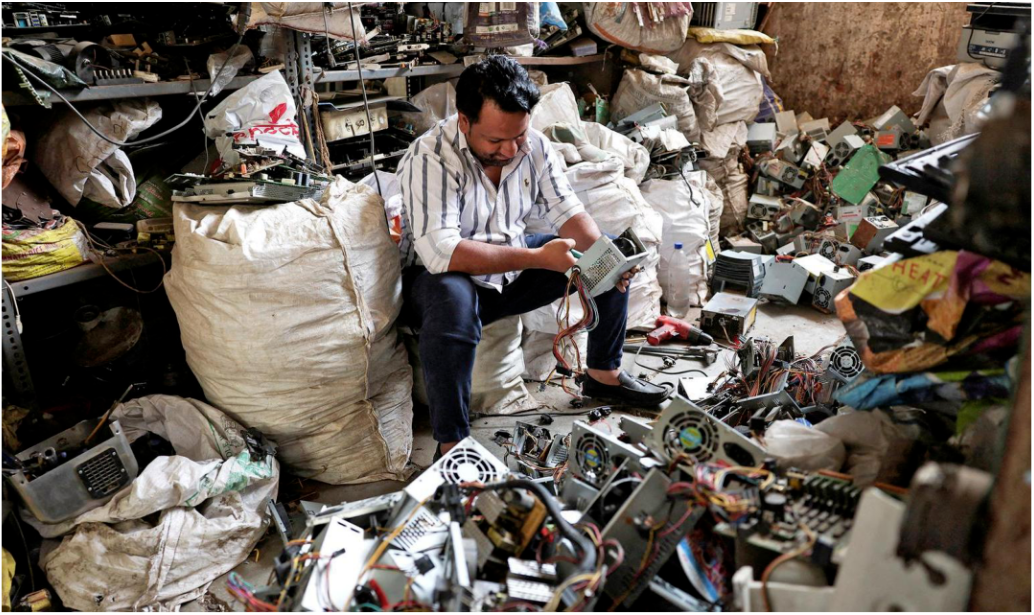



E-waste, the fastest-growing solid waste stream globally, is now one of India’s most pressing yet least acknowledged urban crises. Our embrace of electronics has outpaced our ability to manage their afterlife, resulting in widespread informal recycling practices that are endangering both ecosystems and human health—especially in the country’s most marginalised communities.

Copyright infringement not intended
Picture Courtesy: The Hindu
India generated 2.2 million tonnes of E-waste in 2025, making it the 3rd largest e-waste generator globally, after China and US.
E-waste is electronic products that are unwanted, not working, and nearing or at the end of their “useful life.” Computers, televisions, VCRs, stereos, copiers, and fax machines are everyday electronic products.
International
National
Way Forward
|
Practice Question Digital empowerment raising country’s economy at the cost of Public Health and environment degradation, discuss with reference to e-waste generation. |
E-waste is electronic products that are unwanted, not working, and nearing or at the end of their “useful life.”
E-waste contains metals (e.g., gold, copper, lead), plastics, glass, and sometimes hazardous chemicals where as regular waste contains organic matter (food waste), paper, plastics, and other household items.




© 2025 iasgyan. All right reserved